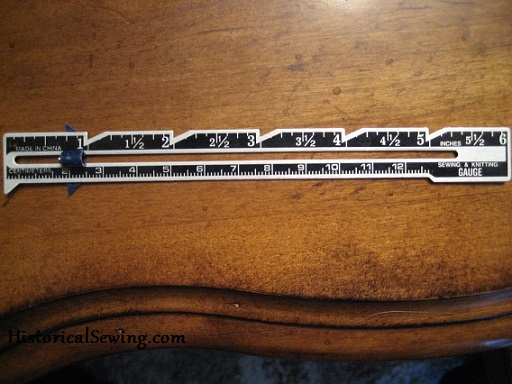
Do you have a seam gauge in your sewing basket? Do you love it as much as I do?
This little 6″ strip of metal with a slider in the center is THE handiest of tools in any sewing room. If you don’t have one, drop everything and go get one now! (You can find them in the notions section of your local fabric store.)
I use mine so often I would be totally lost without it!
Do you know all the ways you can use this handy gadget? Let’s look at a few uses where this tool is helpful when sewing historical reproductions (or any sewing, really).
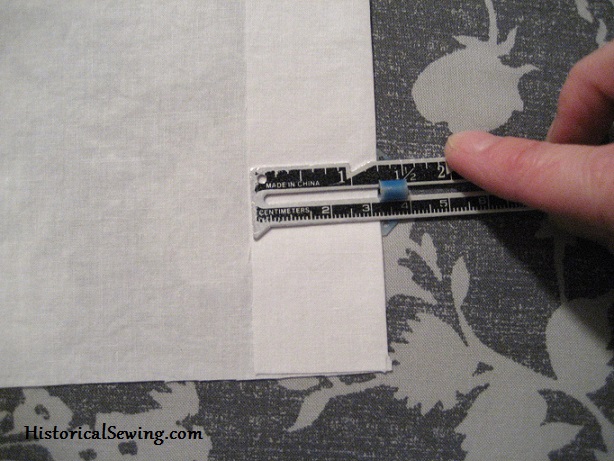
#1 – Evenly mark a hem. The seemingly most basic task… simply slide that center piece to your desired hem width and mark right at the end of the gauge. Follow this step around the entire garment. Then press up and finish the hem in your chosen method.
My little cheat here: rip off the slider on an old gauge and put it on a new one. Use the far slider for your full hem width and the second one for the turn under without having to reset the measurement.
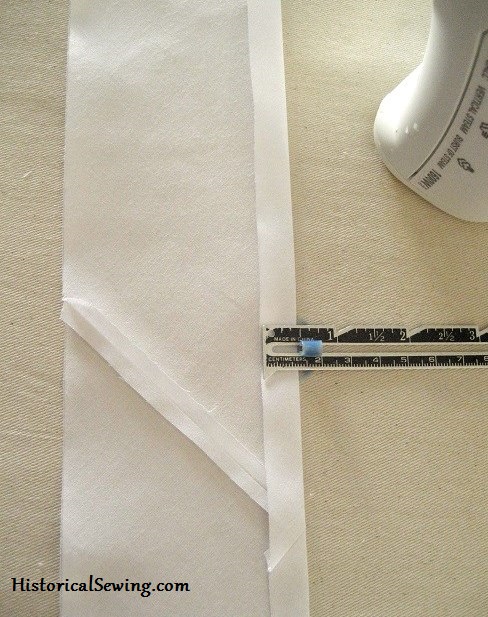
#2 – Press under a tiny seam allowance on self-made bias tape before seaming to the garment. Sure, you can eyeball that ¼” turn under… but you’ll want to start with a precise fold when you begin pressing.
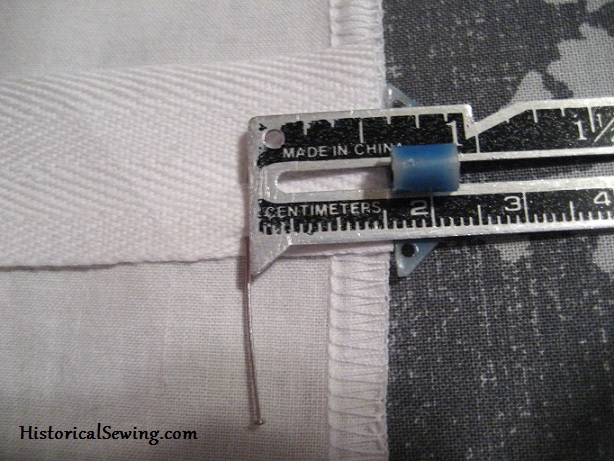
#3 – Measure a seam allowance to know where to start/stop sewing. When needing to stop or start a particular distance from an edge, use your gauge to align your point and also to be consistent if you have several places you need to do this on (like making multiple channels in your lobster tail bustle.)
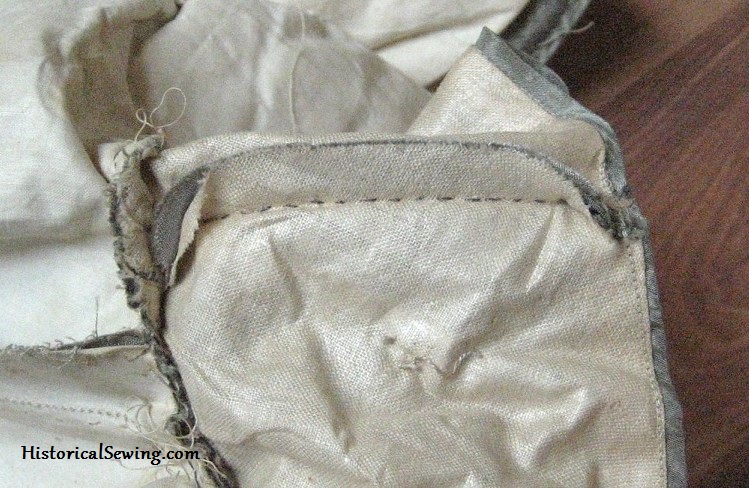
#4 – Check your seam allowance when hand sewing a seam. Unless you’ve been hand sewing a LONG time, you’re gonna want to keep your stitches in check so you don’t end up with a wobbly seam or have a 3/8″ on one end and finish with a ½”. Oops!

#5 – Accurately measure the fold placement for tucks. You know all those lovely even pleats along a petticoat hem or Edwardian sleeve? Except for a very wide tuck area, the small seam gauge works well for marking & pressing the folds before you stitch down.
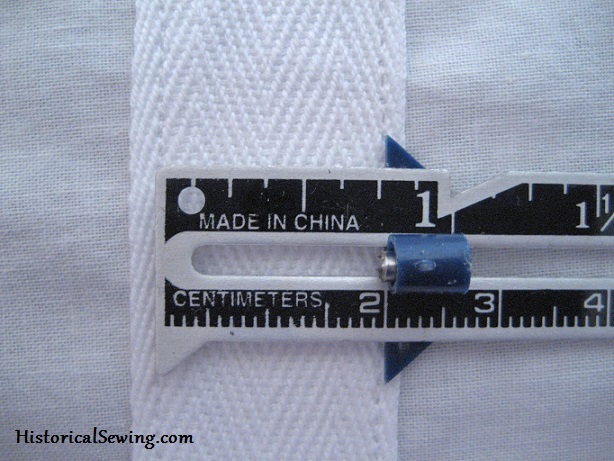
#6 – Measure the width of a bone or wire channel to verify your bone will fit. Although the seam ripper is a BFF, save the anguish of using it by measuring where to actually sew down that strip of twill tape. You’ll be confident the wire will fit just fine because your other BFF was there to help.
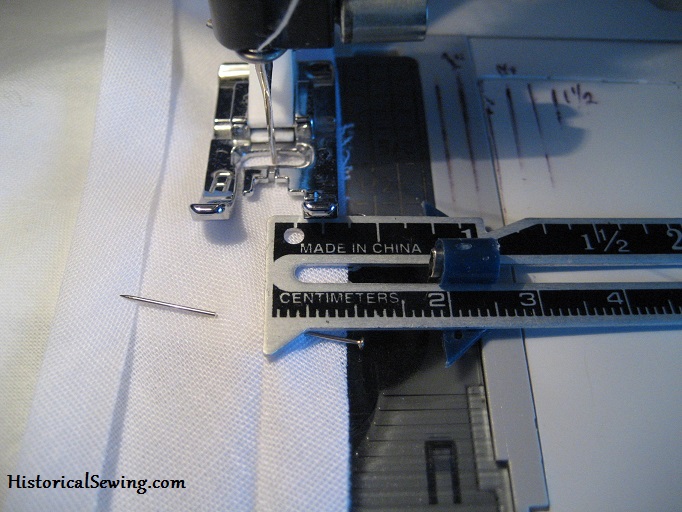
#7 – Verify the placement of your stitching and seam allowance when at your machine. A seam gauge lives next to my sewing machine, for several reasons. One being to double check that I’ve pinned the fold of my bias *right on* the seamline of my garment. Even though I did this as I pinned, I will sometimes go over it again right before stitching just to be sure.

#8 – Verify seam allowance width when sewing “blind”. This is another reason a seam gauge is handy by my machine. How many times do you pin a ruffle, trim, facing, or other layer to your main garment piece only to have to shove it all into your machine blocking the allowance guide? The perfect solution, of course, is to have your seam gauge within reach to monitor your sewing.
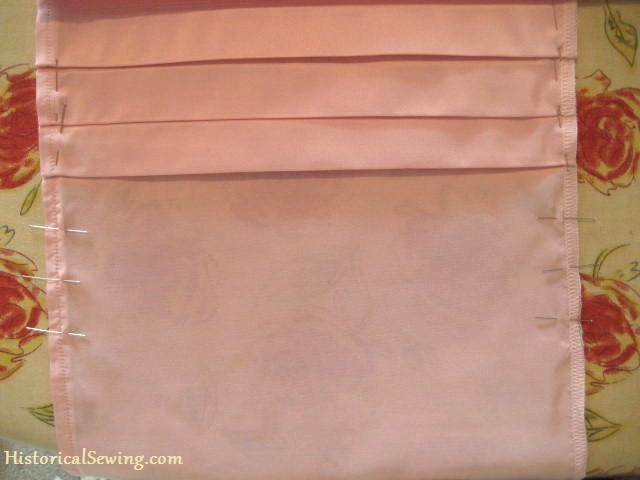
#9 – Use when pin pleating to mark even distances between points of where to fold & press when making pleats. Simple knife pleats need only three marks to be made. A seam gauge set to a specific width will give you nice, even pleats.

#10 – Use to measure pleats in ribbon trims. Now this is a fantastic use of our little ruler! So much easier to pin mark a ribbon for pleating with a 6″ gauge than wielding a 18″ ruler around our work area.
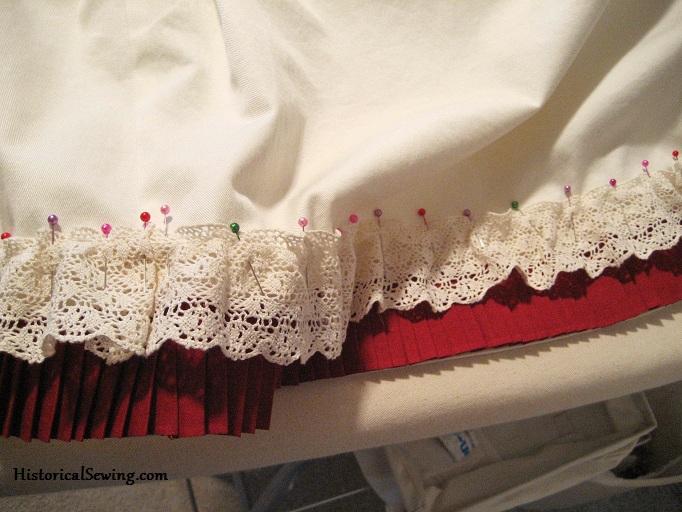
#11 – Make sure your ruffle or lace trim is applied the same distance all around your finished edge. This is especially helpful when tacking trim to the inside of a hem or neckline or layering multiple trims. Measure from the trim edge up to where you see or feel the finished garment edge, pin in place and sew.
Despite only 11 applications listed here, dozens abound for using the ever practical seam gauge. What are your favorite uses?

Just to clarify… When you say the seam gauge can be used for pressing up a hem or bias edge, do you mean: use it to measure for pressing with the iron? Or: crease the edge of the fabric with the gauge, as you would a fold of paper? Being self-taught, learning everything by trial-and-error and by reading, I sometimes have no idea whether I’m reading something from directions that the writer did NOT intend and which would be stupid to try!
Measuring the hem allowance then pressing with the iron. 🙂
Oh my, I couldn’t imagine life with out mine. I have them everywhere. One in each sewing station/machine, the ironing board and supplies, I even bought a chatalaine to pin one to my bodice or the bib of my sewing apron. In the lace box, the knitting basket, on my lace pillow, well just everywhere. I think I even have on in the grooming salon.
My 8th grade home ec teacher insisted on us using them and so did my Grandma.
After years of using rulers and tape measures (and disappearing fabric pens, and T squares, and set squares, and in a pinch, the edge of a big book as a straightedge!) I finally picked up a seam gauge on a whim, and oh my! What a difference it has made! You’re right – this little gadget is magic. 🙂
I’ve been meaning to come back here and comment for a while–when getting ready to make a pair of culottes recently, I picked up a seam gauge on impulse. OMG! It made doing the hems sooooo much nicer and easier! The finished product looks almost professional…and that seam gauge is part of why!
I’ve been sewing for almost 60 years now–yup, I’m THAT old and started THAT young–and have never felt the need of a seam gauge ( I `bout wear out all the rulers and tape measures within reach, though). You’re definitely making me re-think this device: looks like it could be really handy!
It is my favorite tool!
I work in a fabric store and always say it is a MUST HAVE tool because I have to have one. Thank you for confirming it.
Too funny- it’s good to see this little guy get some love. Mine is actually tied to my sewing apron (I have 4 and manage to ALWAYS lose them in the shop if it’s not attached to me). Also, great site. I love reading it!!
so that is what it’s for duh! Thank you so much for your sharing dayly with us about your passions they are the same as mine .I wish I knew how to get a web page to post my projects but don’t understand how to do it .I’m on a 5 dollar a week allowance due to house debt.I am using up my fabric and only getting new if it’s given to me .The funny thing is I’m more creative because I spend no time shopping only working funny huh?
I never even imagined someone could sew/live without a seam guage! I keep one beside my machine, one at my ironing board, and one in my sewing basket for handsewing. Love the idea of using two sliders in one gauge – fantastic!
I use it in a pinch to sweep that area between my sewing machine needle and where the bobbin thread comes out to where I can grab it with my fingers.
Here’s a couple of non-measurement uses: I use the pointy tip to poke out corners of seams and squared edges. I’ve also used it to push out facing seams before pressing when the fabric needs a third hand. It’s one of my most-used tools!